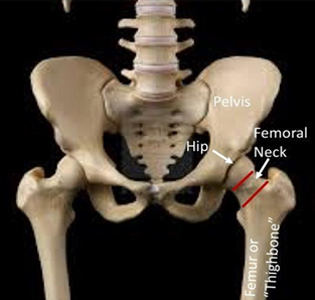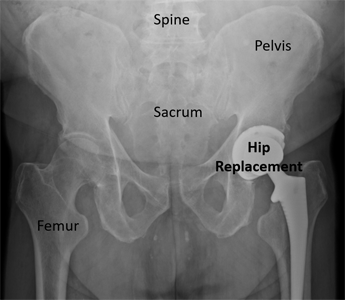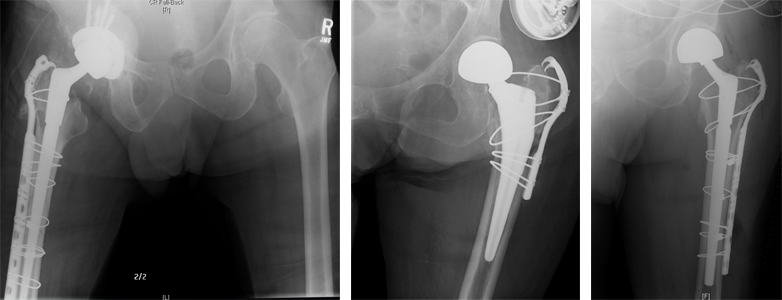Physical Therapy Videos - Hip and Pelvis
What Is It?
Your hip joint has two bones: the top of your thigh bone (femur) and the hip socket (pelvis). Your hip lets you move your leg when you walk. Sometimes, people need a hip replacement when their hip wears out. This surgery replaces the top of the femur and hip socket with metal and plastic parts.
How It Happens
A broken bone around a hip replacement is called a periprosthetic hip fracture. It can happen during the surgery, or after a fall or accident. The break usually happens in the thigh bone near the metal stem. Sometimes, the bone near the hip socket breaks too.
First Steps
These fractures are very painful, and you can't walk or stand. You'll need to go to the emergency room. Doctors will check your leg and may take x-rays or a CT scan. They might admit you to the hospital or send you to another one that treats this injury. They may also do tests on your head and heart to see if you're hurt anywhere else.
Treatment
You'll usually need surgery for this fracture. The kind of surgery depends on where the break is and if your implant is loose or not. If the implant is stable, doctors use a plate, screws, and wires to fix the bone around the implant. If the implant is loose, they replace it and add plates, screws, and wires.
Recovery
After surgery, you'll work with physical therapists to get stronger and walk again. Your surgeon will tell you how much weight you can put on your injured leg. You'll usually take blood thinners to prevent blood clots. Moving early and taking blood thinners help prevent clots. You'll take different pain medicines after surgery. You may need to wear a brace to stop your hip from moving a certain way if the doctor thinks that is needed.
Long Term
You might need a walker or cane to help you walk after surgery. You could need it for a short or long time. Physical therapy helps you walk as normally as possible. They'll work with you on moving, strengthening, stretching, and building endurance. Keep doing the exercises you learn in therapy at home to recover faster. You might have complications like blood clots, infections, trouble walking, a limp, or hip dislocation. You may need more surgery, antibiotics, hospital stays, or braces to treat these problems.
Physical Therapy Videos - Hip and Pelvis
---
Lance Jacobsen
Edited by the OTA Patient Education Committee
X-rays and images from the personal collection of Dr. Jacobsen and Christopher Domes, MD




